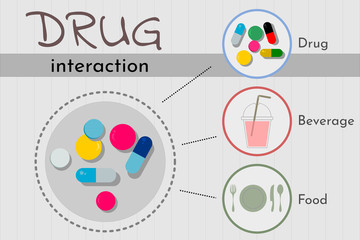A tool to evaluate potential drug interaction causation in a specific patient.
The assessment of causation for a potential drug interaction requires thoughtful consideration of the properties of both the object and precipitant drugs, patient-specific factors, and the possible contribution of other drugs that the patient may be taking.
The Drug Interaction Probability Scale (DIPS) was developed to provide a guide to evaluating drug interaction causation in a specific patient. It is intended to be used to assist practitioners in the assessment of drug interaction–induced adverse outcomes.
The DIPS uses a series of questions relating to the potential drug interaction to estimate a probability score. An accurate assessment using the DIPS requires knowledge of the pharmacologic properties of both the object and precipitant drugs. Inadequate knowledge of either the drugs involved or the basic mechanisms of interaction will be a limitation for some users.
DIPS questionnaire is intended to be used to evaluate adverse events resulting from the interaction of 2 drugs—the drug that is affected (object drug) and the drug that causes the change to the object drug (precipitant drug).
DIPS Online Calculator
The Drug Interaction Probability Scale (DIPS) online calculator for potential drug-drug interactions is available at pmidCALC.org
DIPS Questionnaire
Horn, Hansten and Chan developed the Drug Interaction Probability Scale based on Naranjo ADR Probability Scale.
This tool consists of 10 questions each with three response options to which a score is given. The final score translates into a qualitative scale expressing the probability of the reaction actually being a drug interaction. The score obtained is not absolute, neither can it be extrapolated to other similar cases, but is relevant for determining how likely each individual case of ADR is to have originated from an interaction.
Directions:
- Circle the appropriate answer for each question and sum the score.
- Use the Unknown or Not Applicable (NA) category if
- you do not have the information, or
- the question is not applicable.
Note:
- Object drug = Drug affected by the interaction
- Precipitant drug = Drug that causes the interaction
Question 1: Are there previous credible reports of this interaction in humans? Yes +1, No –1, Unknown or NA 0
Question 2: Is the observed interaction consistent with the known interactive properties of precipitant drug? Yes +1, No –1, Unknown or NA 0
Question 3: Is the observed interaction consistent with the known interactive properties of object drug? Yes +1, No –1, Unknown or NA 0
Question 4: Is the event consistent with the known or reasonable time course of the interaction (onset and/or offset)? Yes +1, No –1, Unknown or NA 0
Question 5: Did the interaction remit upon dechallenge of the precipitant drug with no change in the object drug? (If no dechallenge, use Unknown or NA and skip Question 6). Yes +1, No –2, Unknown or NA 0
Question 6: Did the interaction reappear when the precipitant drug was readministered with continued use of the object drug? Yes +2, No –1, Unknown or NA 0
Question 7: Are there reasonable alternative causes for the event?α Yes –1, No +1, Unknown or NA 0
Question 8: Was the object drug detected in the blood or other fluids in concentrations consistent with the proposed interaction? Yes +1, No 0, Unknown or NA 0
Question 9: Was the drug interaction confirmed by any objective evidence consistent with the effects on the object drug (other than drug concentrations from question 8)? Yes +1, No 0, Unknown or NA 0
Question 10: Was the interaction greater when the precipitant drug dose was increased or less when the precipitant drug dose was decreased? Yes +1, No –1, Unknown or NA 0
α Consider clinical conditions, other interacting drugs, lack of compliance, risk factors (e.g., age, inappropriate doses of object drug). A “No” answer presumes that enough information was presented so that one would expect any alternative causes to be mentioned. When in doubt, use Unknown or NA designation.
Total Score:
- Highly Probable >8
- Probable 5-8
- Possible 2-4
- Doubtful <2
Source:
- Horn JR, Hansten PD, Chan LN. Proposal for a new tool to evaluate drug interaction cases. Ann Pharmacother. 2007;41(4):674-80

